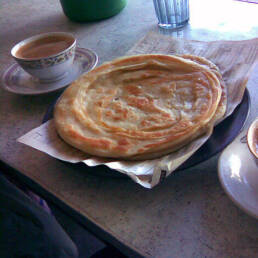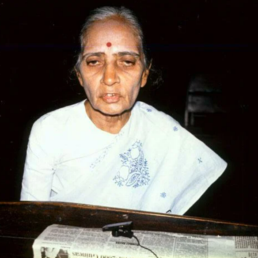Kalabari tribe and it's connection with Madras fabric
- History
- Culture
The clothing worn by the Kalabari is a reflection of their unique way of life. To create a distinctive outfit, they combined their ancient tradition with the finest of the foreign borrowed artefacts. The most notable of these treasures is Madras.
As you may already know from our past tales, Madras is the name of ancient light cotton fabric with a distinctive grid pattern and a tartan design influenced by Scotland – named after the place of origin – Madras, the erstwhile name of Chennai, Tamil Nadu.
The East India Company founded a trade office in Madraspatnam (Madras) in the middle of the 17th century when they were frantically looking for high-quality textiles. Over time, they transformed the burgeoning weaving region into a highly productive business.
The gorgeous and genuine Madras cloth, which quickly rose to popularity and significance among numerous African and Middle Eastern ethnic groups, brought in enormous profits for the European traders and became a notable artifact for the trans-Atlantic slave trade.
The Portuguese introduced Madras to Nigeria, one of the intermediaries in the transatlantic slave trade, and left behind a lasting impact. The Kalabari tribe referred to it as Injiri, which is the indigenous pronunciation of the word India.
The Kalabari chiefs readily accepted Injiri and used this authentic and finest material from India to make their ceremonial garb. It immediately took on a special significance in Kalabari culture and served as a metaphor for the journey from the womb to the tomb.
A new mother dons an Indian Madras after giving birth to her child. Madras can also be used to wrap the baby or the carrier it is in. During the naming ceremony, the father would present his child with an uncut Indian Madras gift as a sign of acknowledging paternity.
Interestingly, the Indian Madras plays a significant role in a Kalabari funeral ritual as well. It serves as clothing for mourning, a covering for the walls of funeral homes, and even a way to dress the dead.
It got to the point that, in the early 18th and 19th centuries, brides from West Africa, the Gold Coast, and Ghana adored having their dresses custom-made from Madras Checks.
Fascinatingly, centuries later In 1983, when the oil industry crashed in Nigeria, millions of Ghanaian immigrants were expelled from the country, and the Madras fabric played a compelling role again in this touching story.
The mass human migration made way for the rise of the very popular plaid ‘Efiewura Sua Me’ or ‘Ghana Must Go’, inspired by age-old Madras textures, famously used for making large bags for refugees to carry their belongings.
The amazing journey of Madras fabric from the ‘womb to tomb’ rituals of Nigerian tribes to the symbolic companion of Ghanaian refugees is a testimony to a contrasting vibrant yet ugly world.
Source: Social Change and Dress among the Kalabari of Nigeria / Joanne Bubolz Eicher. The sacred use of Indian textiles by the Kalabari of Nigeria / Joanne Bubolz Eicher. cooperhewitt.org, Wikimedia. Fatherland Gazette.







